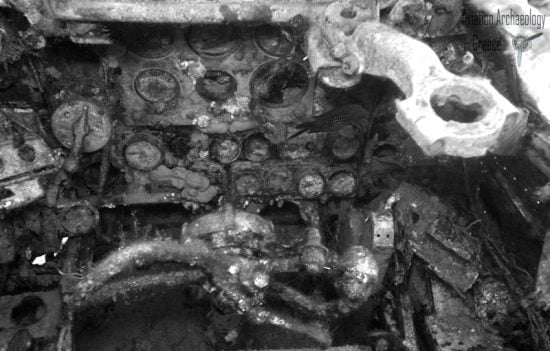The Bristol Type 156 Beaufighter (often called the Beau) is a multi-role aircraft developed during the Second World War by the Bristol Aeroplane Company in the UK. It was originally conceived as a heavy fighter variant of the Bristol Beaufort torpedo bomber. The Beaufighter proved to be an effective night fighter, which came into service with the Royal Air Force (RAF) during the Battle of Britain, its large size allowing it to carry heavy armament and early airborne interception radar without major performance penalties.



The Beaufighter was used in many roles; receiving the nicknames Rockbeau for its use as a rocket-armed ground attack aircraft and Torbeau as a torpedo bomber against Axis shipping, in which it replaced the Beaufort. In later operations, it served mainly as a maritime strike/ground attack aircraft, RAF Coastal Command having operated the largest number of Beaufighters amongst all other commands at one point. The Royal Australian Air Force (RAAF) also made extensive use of the type as an anti-shipping aircraft, such as during the Battle of the Bismarck Sea.

The Beaufighter saw extensive service during the war with the RAF (59 squadrons), Fleet Air Arm (15 squadrons), RAAF (seven squadrons), Royal Canadian Air Force (four squadrons), United States Army Air Forces (four squadrons), Royal New Zealand Air Force (two squadrons), South African Air Force (two squadrons) and Polskie Siły Powietrzne (Free Polish Air Force; one squadron). Variants of the Beaufighter were manufactured in Australia by the Department of Aircraft Production (DAP); such aircraft are sometimes referred to by the name DAP Beaufighter.
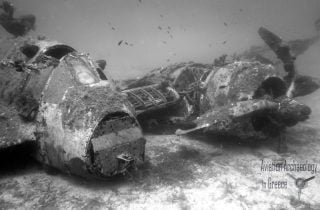
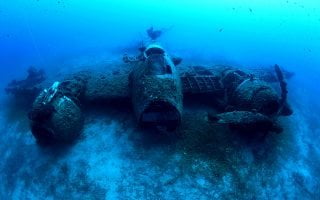
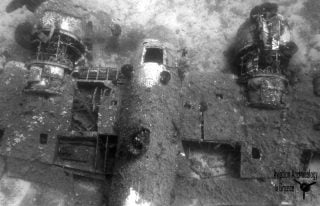
At a depth of 34 meters off the coast of Naxos, approximately half a nautical mile from the coast, divers found a RAF Bristol Beaufighter in 2007. Based on testimonies of fishermen, but also the inhabitants who had seen the events, this specific Beaufighter was shot down after destroying a German Airplane type Arado Ar 196 during an anti-shipping mission in November 1943.


“As we get closer we see that the aircraft is in almost undamaged condition. It looks like it landed there with care and skill, but of course this belongs only to the realm of our imagination since no airplane will not “choose” to land 34 meters below the sea surface” says acclaimed photographer and scuba diver Giorgos Rigoutsos. A piece of the rudder over the tail fins is missing, and some bullet holes in the side of the aircraft suffered by anti-aircraft fire vividly demonstrate what caused the twin engined aircraft to ditch at sea. The cone at the airplane’s nose, made of thin metal, has eroded and is now close to the aircraft.
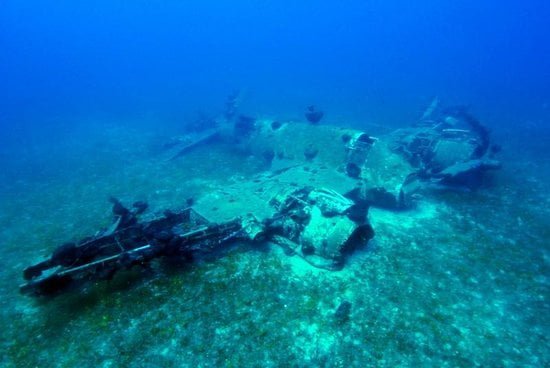
Photo Credits:
Kostas Thoctarides
http://aviationarchaeology.gr
https://www.bluefindivers.gr
https://www.wikiwand.com
Sources:
http://aviationarchaeology.gr
https://www.bluefindivers.gr
